How to Make a Truck Look Like a Train Car
Learn the difference between these rail equipment types: auto rack, boxcar, centerbeam, covered hopper, coil car, flatcar, gondola, intermodal equipment, refrigerated boxcar, open-top hopper, tank car, well car.
You probably know the difference between a sedan, an SUV and a pickup truck. But do you know the difference between a boxcar, a tank car and a gondola?
Just like people buy specific passenger vehicles to accommodate their needs to transport passengers and cargo, a variety of rail cars exist to accommodate the needs of various freight shippers. How are they built and what do they carry? Here's your guide, complete with rail car photos. And don't miss the "Rail Car Types and What They Carry" video at the end to see them in action!
Autorack
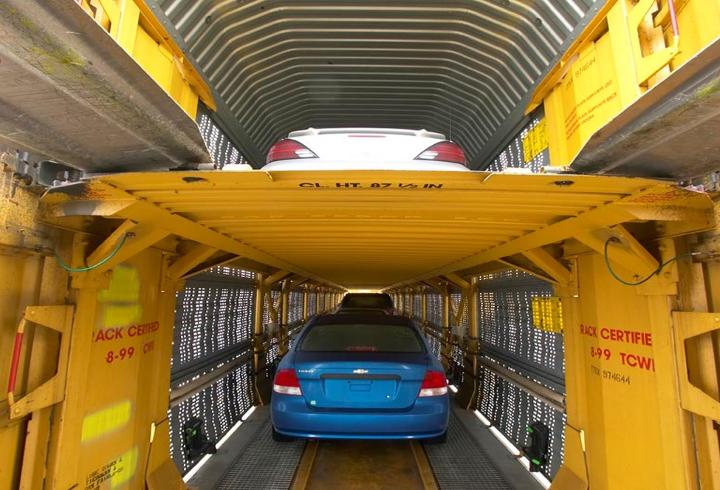
Autorack
What it carries: Finished vehicles, including cars, trucks and SUVs.
How it is built: Autoracks are made of metal and are entirely enclosed to protect vehicles from the elements. Metal "racks" inside create levels (also referred to as "decks") within the rail car. Having multiple levels within the rail cars maximizes shipping space by allowing vehicles to be safely stacked during transport without causing damage to the vehicle. Traditionally, there are two kinds of autoracks: bi-level, which has two levels and can be used for any vehicle type, and tri-level, which has three and is typically used for smaller passenger vehicles.
Boxcar
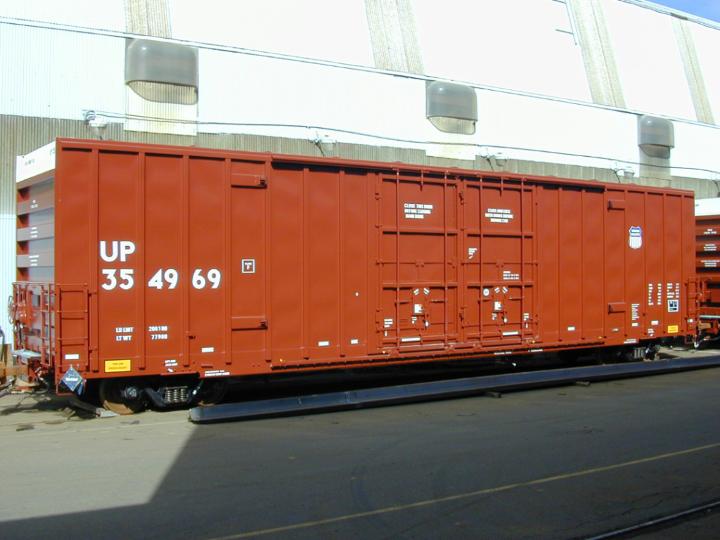
Boxcar
What it carries: Boxcars can carry a wide variety of crated or palletized freight, including paper, lumber, packaged goods, beverages and (shocker) boxes.
How it is built: Boxcars are fully enclosed and, true to their name, are the most "boxy" looking of all the rail car types. Boxcars typically have doors on the side of the car, but can have them at the ends, too. Because they are enclosed, boxcars protect the freight inside from weather during transport.
Centerbeam
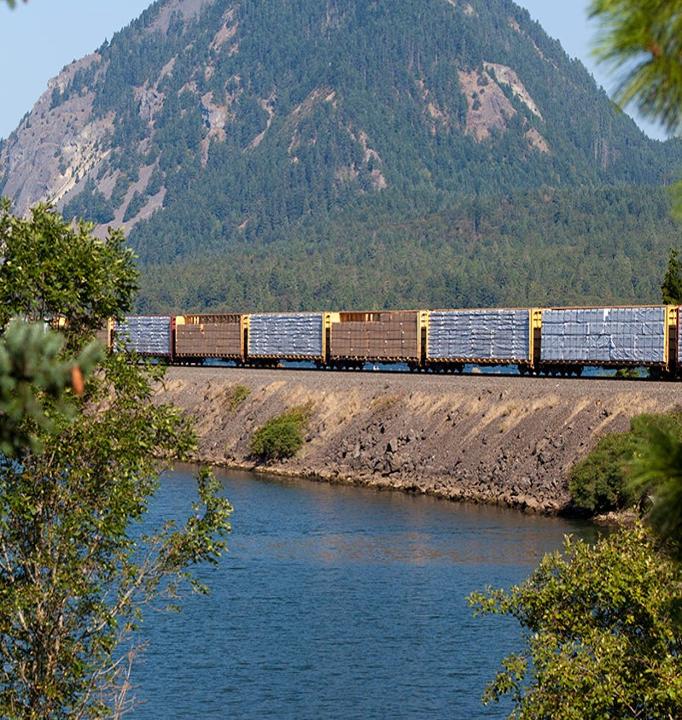
Centerbeam
What it carries: Bundled goods like lumber, wallboard, fence posts and other building supplies.
How it is built: Not surprisingly, a centerbeam has a "center beam" or partition that reinforces the center of gravity and allows products to be secured in place.
Covered Hopper
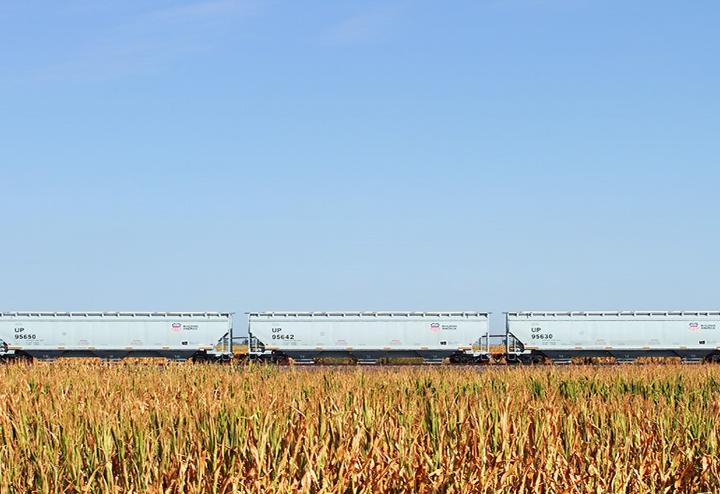
Covered Hopper
What it carries: Free-flowing dry bulk commodities like cement, roofing granules, sand, corn, wheat, barley, fertilizer, soda ash, sugar and rice.
How it is built: Covered hoppers feature an open top into which product can be loaded and a sloped floor that allows product to be unloaded through doors at the bottom using gravity. The top is then covered to protect the contents inside.
Coil Car
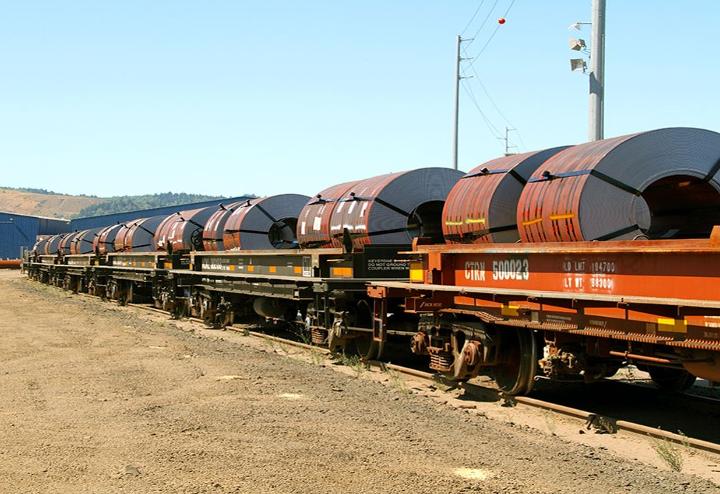
Coil Car
What it carries: Coil cars are designed for products like coiled steel, steel plate or high-grade ores.
How it is built: Coil cars come in a variety of lengths, tonnage and capacities for specialized commodities. For instance, some coil car troughs are designed to prevent coils from rolling, some feature side brackets so the load can be secured without using cables, and others are designed so special measures aren't needed to secure the load. While coil cars often carry commodities that can't be damaged by the elements, covered coil cars are available to offer this protection when needed.
Flatcar
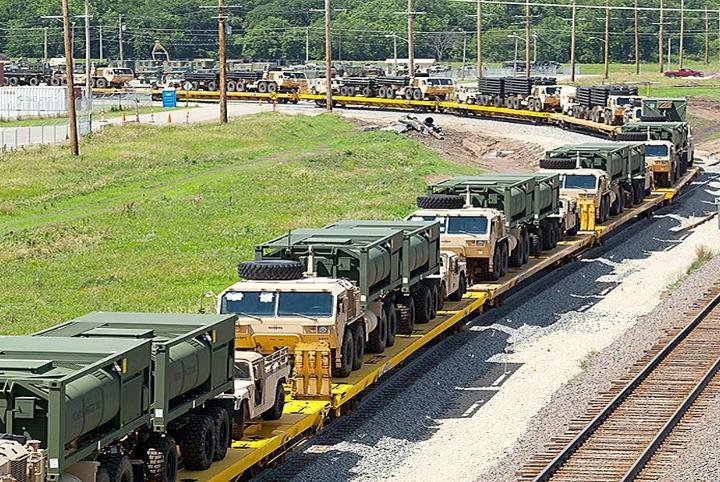
Flatcar
What it carries: Pipe, rail, steel plate, machinery, steel beams, tractors, military vehicles, lumber, poles and logs.
How it is built: Flatcars are, well…flat. Some feature an open design with a simple flat, even platform and others feature bulkheads at each end to protect loads from shifting. Like coil cars, flatcars come in a variety of lengths, tonnage and capacities and are ideal for freight that won't be damaged by the elements. The open design of flatcars allows them to accommodate oversized and oddly shaped freight.
Gondola
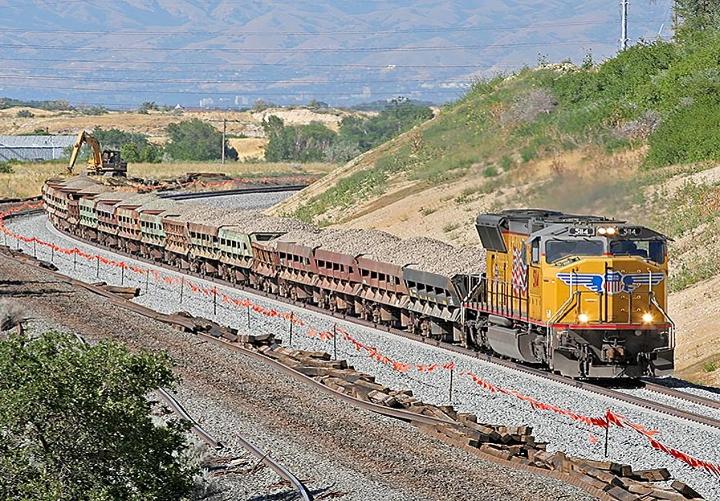
Gondola
What it carries: Heavy bulk commodities including scrap metal, aggregates, logs, lumber, steel, sand, copper and iron ore.
How it is built: Gondolas are sturdy cars with low side walls and open tops. Imagine a boxcar cut in half horizontally, and you've got yourself a gondola.
Intermodal Equipment
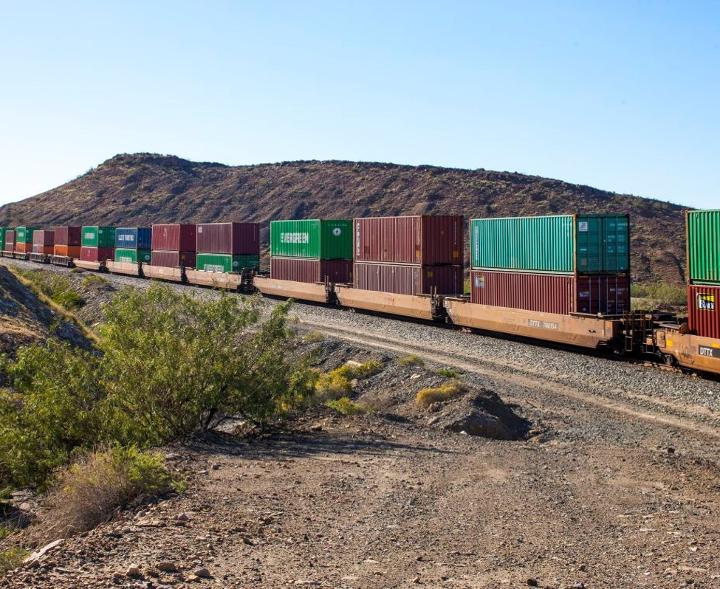
Intermodal Equipment
What it carries: A wide variety of goods, from apparel to electronics to refrigerated products and much more.
How it is built: Intermodal equipment includes containers (which are like boxcars without train wheels) and trailers (the part of an over-the-road truck that holds freight). Containers can be transferred between ships, trains and trucks without unloading or reloading the cargo. Similarly, trailers can be transferred between trucks and rail cars. To move by rail, trailers are loaded onto flatcars and containers are loaded onto well cars.
Refrigerated Boxcar
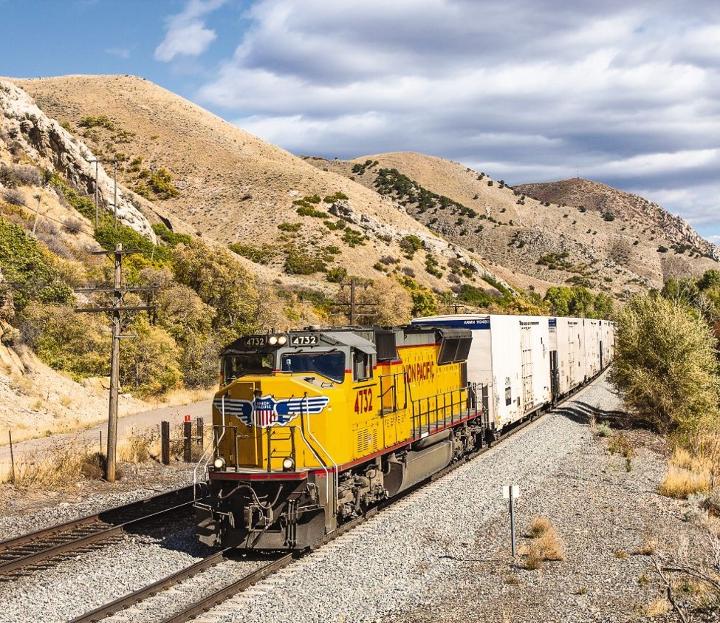
Refrigerated Boxcar
What it carries: Perishable freight, like fresh fruits, vegetables, frozen food, beverages, meat, poultry, seafood and cheese.
How it is built: Refrigerated boxcars (commonly referred to as "reefers") are much like traditional boxcars but with one very important difference: they are temperature controlled.
Open-Top Hopper
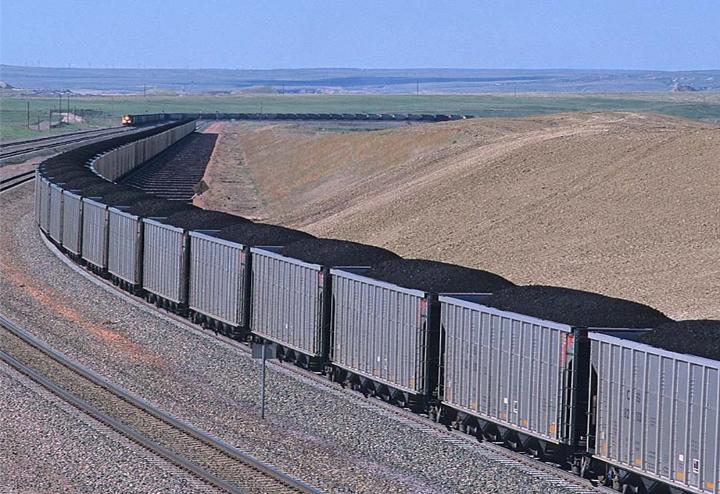
Open-Top Hopper
What it carries: Coal, petroleum coke, sand, rock and copper concentrate.
How it is built: An open-top hopper is similar to a covered hopper in that it has an open top for loading and a sloped floor with doors for unloading. The difference is open-top hoppers do not have covers, so are better suited to freight that can be exposed to the elements.
Tank Car
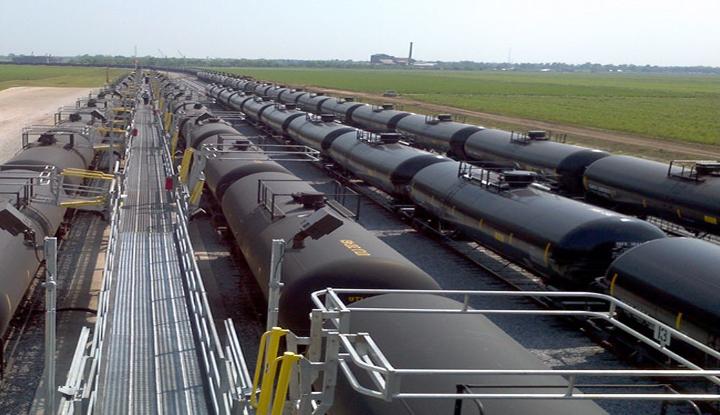
Tank Car
What it carries: Compressed or liquid commodities, like chemicals, molasses, edible tallow, water and diesel fuel.
How it is built: The body of a tank car is literally a tank designed to hold liquids. Tank cars are more cylindrical than other rail cars: Imagine a barrel tilted on its side, elongated and expanded to hold between 6,500 gallons to more than 31,000 gallons, and you'll be looking at a tank car.
Well Car
What it carries: Intermodal containers, which can hold a wide variety of goods.
How it is built: Well cars, also known as "stack cars" or "well wagons" are specifically designed so intermodal containers can fit snugly inside. The "well" is a depression that sits close to the rails. Because well cars ride lower than flatcars, they allow for containers to be stacked on top of one another, with two containers per well car. This is commonly referred to as a "double stack."
A Rail Car for Everything, and Everything in a Rail Car
You can ship just about anything by rail, and as you can see, there is a rail car for just about everything. To learn more about these rail car types and their specifications, check out additional details here – or contact us to learn how your products can move by rail.
Related Articles:
- Quiz: Is Rail the Right Fit for Your Shipments?
- What Is Intermodal Shipping...and Why Should Shippers Care?
- Rail 101 FAQs
- The Art of Loading a Rail Car
- How Do Rail Cars Move?
- What Is a Rail Tank Car?
- What Is a Refrigerated Boxcar — and How Do They Keep Shipments Cold?
- What Is an Autorack Rail Car?
- What Is a Boxcar Rail Car?
- What Is a Covered Hopper Rail Car?
- What Is Intermodal Equipment?
- Transportation Modes Revealed: A Comprehensive Look
See the various rail car types in action
How to Make a Truck Look Like a Train Car
Source: https://www.up.com/customers/track-record/tr181121_rail_car_types.htm